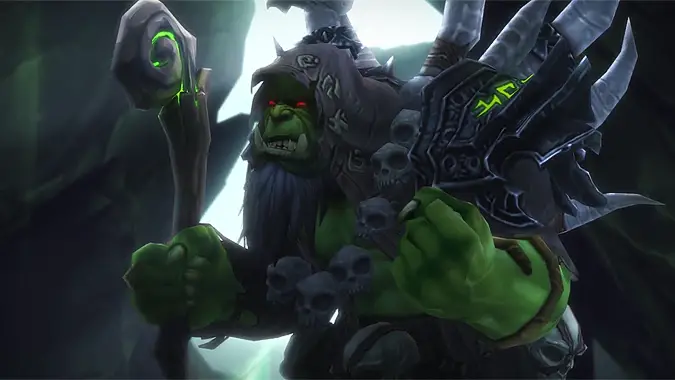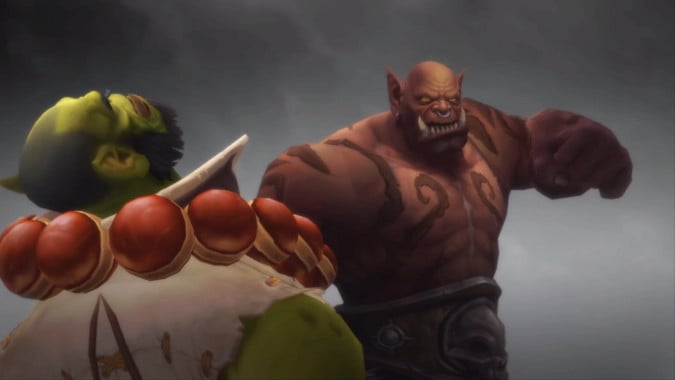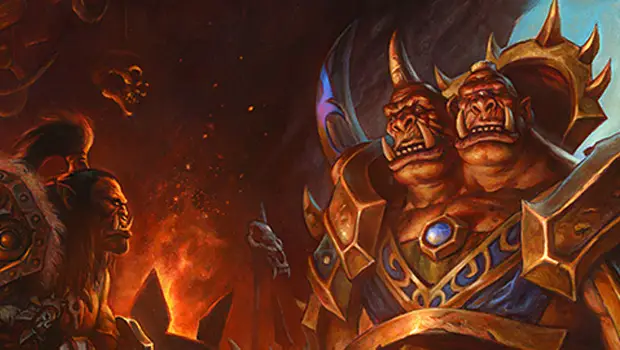The importance of story

I know a lot of players who argue that the story in MMOs like World of Warcraft is less important than the play experience. That “gameplay trumps lore“ if you will, which is an argument I have made myself from time to time. (To be fair to myself, the point I was trying to make there was that story is a game mechanic in WoW.) But watching the past few months of Warlords of Draenor has convinced me of a few things.
First, I’ve come to realize that even the most diffident readers of quest text, the most disinterested of the players still want to understand on some primal level what they are doing and why they are doing it. Something simple like “We’re going to fight the Lich King” or even “Deathwing wants to blow up the world” is enough, but once they can’t encapsulate the reason for their character to be somewhere, discontent starts to percolate. The difficult to encapsulate premise of Warlords has been a real problem for people, and it has contributed to a general unwillingness to suspend disbelief and simply accept.
When confronted with the alternate timeline we’re exploring in this expansion, players are filled with a host of questions that the narrative doesn’t spend a lot of time answering. Even in a game that focuses as much or more on the gameplay experience as it does the story, that’s inadvisable. I’m not saying that upon arrival in Frostfire or Shadowmoon there should be a giant exposition NPC who explains the entire expansion to players. I’m arguing that playing the expansion should provide that information. Warlords does some of this, but not as well as Mists of Pandaria did, and frankly, not even as well as Cataclysm did.

The path needs to be clear
This expansion does trump the return of Deathwing in terms of cohesiveness and the leveling game. Going from 90 to 100 you are guided from zone to zone confronting the Iron Horde and other threats, and that was the expansion’s really great moment in terms of storytelling. The problem is when you hit level 100 and the only real forward story progression is the garrison campaign, which is gated and only unlocks a week at a time. That’s absolutely not a good idea.
Combine this with the initial raids and we have a real issue. The alliance between the Iron Horde and the ogres of Highmaul is not very well explained save through the garrison campaign (that you might not even have unlocked yet by the time you raid it) and a short story that came out months after most groups had the instance on farm. There was a real opportunity to make Highmaul flow into Blackrock Foundry, to give players a sense of importance to the progression, but this was actually hampered by a gameplay decision to put Kargath Bladefist in as the first boss of Highmaul instead of at the end.
Yes, Imperator Mar’gok is the ruler of Highmaul, but story-wise Highmaul is only important to us as a means to strike at the Iron Horde. Making Kargath a road bump on the way to destroying someone we’d never heard of ended up making the raid feel utterly disconnected from the story, whereas killing Kargath last would feel like we’d stormed the place and dealt a serious blow to the Iron Horde. Furthermore, it could have led to a real connection to Blackrock Foundry. Kargath could have dropped a clue that pointed to the importance of the Foundry, giving Horde and Alliance forces alike a reason to go there. Weapon plans, a report on supply chains, something.

The players must be the ones to walk it
The use of cinematics while leveling was well executed. The cinematics team usually does excellent work and this expansion is no exception. However, having the fall of Grommash and the rise of Gul’dan be entirely through cinematics instead of having it actually occur in game does lead to players feeling unimportant. The end of the garrison campaign would have been a great time to include a quest where we infiltrate the Iron Horde and witness this moment, perhaps even have Gul’dan give us credit for his ascension. Because that’s one of the easiest to ignore story beats of this expansion — Gul’dan’s rise is entirely our fault.
We freed him, we let him run loose, we took out Ner’zhul (most likely the only threat to Gul’dan’s plans in the Iron Horde) and kept weakening the Iron Horde to the point where Gul’dan’s bargain actually sounded like a good idea. This entire turn of affairs in Tanaan with blood-frenzied orcs marching in step with Gul’dan’s insane ambitions is exactly our doing, and it should be far more prominent in the story as a whole.
But players aren’t getting to see and feel connected. Thrall killing Garrosh is one example — yes, in terms of the plot it’s Thrall letting his temper get the best of him and in the process helping Gul’dan rise to power, absolutely. But it steals from the player to do it. Let us kill Garrosh. We’re the ones who stopped him in Orgrimmar, we’re the ones who came charging after him now. Thrall’s role in the story should be to facilitate our heroism, not to make it feel unnecessary. If Thrall was going to just challenge the guy to Mak’gora, why didn’t he just do it? Why make us fight our way through his forces first?
In the end, these missteps have contributed to player dissatisfaction. An expansion with a difficult premise could be brought forth if the players felt invested in it, but constantly reminding them that they aren’t doesn’t help. Players need to be there when the big events happen, at the very least they can’t feel like spear carriers for the NPCs. The players must grasp the story, be invested in the story, and help move the story forward, or they simply will not care and that will be reflected in everything else.
Essentially, story trumps gameplay.
Please consider supporting our Patreon!
Join the Discussion
Blizzard Watch is a safe space for all readers. By leaving comments on this site you agree to follow our commenting and community guidelines.
 @MatthewWRossi
@MatthewWRossi



